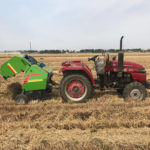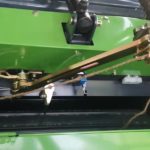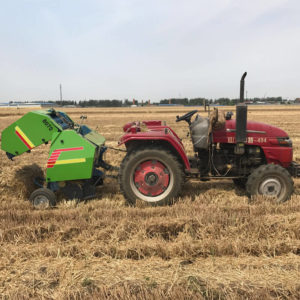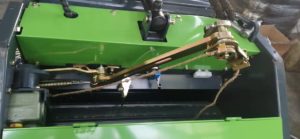Round balers are one of the most common equipment on hay fields. They produce high-quality round crop bales with the ability to wrap the hay after pressing it together. They’re efficient and effective, but that doesn’t mean they’re easy to operate. Let’s see how we can effectively operate a round baler.
When operating a round baler, specific steps will be taken for your make and model. There is a round baler model 0850 on the market which we will take a look at here.
1. Connect the baler to the tractor
First, you have to attach the round baler to the tractor. Put the tractor in neutral and connect the hitch, PTO and hydraulics to secure your baler to the tractor.
2. Loading material
If you haven’t already loaded your bounding material into the baler, now is the time to do so. Some models have twine, mesh, plastic wrap or a mixture of these. Make sure that the baling material is loaded correctly so that the machine can work properly and that there are no accidents when bundling round bales.
3 Last minute inspection
Do a final walkthrough and check that all accessories are correct. Doing these every time you want to use your round baler will make maintenance easier and will also ensure that the round baler is running efficiently while you work.
4 Starting a bale
Start the PTO at minimum throttle until you get close to the first crop to pack. Once you stop just above the start of the row, slowly increase the PTO throttle. The higher you go, the faster the conveyor belt spins, which will allow for faster harvesting of crops.
Drive over the strip to make sure the tractor tires are always aligned. The optimum speed for most balers is between 12-25 mph, but this is highly dependent on strip size, humidity, and tractor and baler power. Round baler to clear blockages in the machine before continuing.
5 Finishing a bale
When the baler is full, it will alert you based on how the specific model works. Of course, others will function differently.
Once the round bale reaches the desired density, use the wrap/bundle function to wrap twine, mesh and/or plastic around the bale and discharge it from the round bale machine.
Most round balers will follow this usage pattern, but since every model is different, minor adjustments in the baling process must be accounted for. Be sure to read the manufacturer’s manual and read other people’s experiences online.
A round baler can be used quite safely if common sense is applied when operating the machinery.
- Don’t stick your hands/feet/head around any operating machinery
- Follow the operating instructions
- Only bale crops approved for your make and model
- Only use binding material made for your make and model
- Turn off all power when you need to perform maintenance or routine work on your machinery
- Wear PPE
Follow these simple rules and operating a round baler is quite safe!






